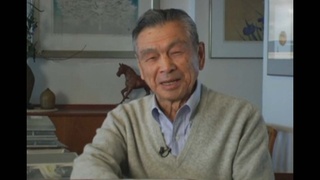Interviews
The HLA and transplantation history books
Those two books of history of the HLA1 and history of transplantation2, today I believe are very valuable because many of the people are no longer with us. And it’s really good that I did that when I did. But, also, I don’t know if you read the preface. The preface, I said, this is a “Rashomon” history, which means that everybody gives his own version. And I wanted to do that. I said, “Okay, I don’t know if you’re going to give the history in the correct way, but it’s okay. Tell us what you think was the history.” [That] is the way I did it.
And I think it was very nice that each person gave history from his viewpoint. And also, mostly, as you see reading the books that it’s more his own contribution, which is okay because the reader can then put this together and then sort of see what is the history. Also, I think it’s a very important source book for our future story because this is what this person said. And I was impressed that there were not a lot of conflicts. In other words, two people claiming to have done the same thing. Also, you see, if you read the books, that there was a lot of interchange—that in science we have young people that go from one lab to another. It’s like pollinating in the different places. That’s very obvious in this book, where you can see how people that you didn’t know were connected are connected by these young post-docs.
1. HLA is the acronym for human leukocyte antigen, a genetic maker found on cells of the body that determine white blood cell types. The HLA system is used to assess tissue compatibility for organ transplantation and platelet transfusion. There are over ten thousand HLA types.
2. P.I. Terasaki, ed., 1990, History of HLA. Ten Recollections, Los Angeles: UCLA Tissue Typing Laboratory; Paul I. Terasaki, ed., 1991, History of transplantation: Thirty-five Recollections, Los Angeles: UCLA Tissue Typing Laboratory.
Date: February 10, 2004
Location: California, US
Interviewer: Gwenn M. Jensen
Contributed by: Watase Media Arts Center, Japanese American National Museum.




